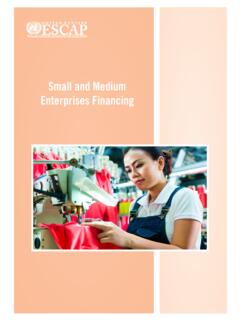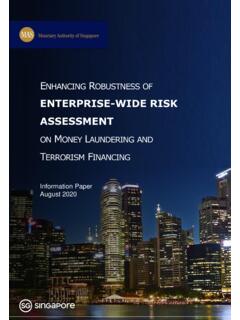Transcription of Entrepreneurial Ecosystem Model - NWBC
1 Entrepreneurial Ecosystem Model One approach to understanding the interactions between the actors and processes that support segments of entrepreneurs, such as women entrepreneurs, is the application of an Entrepreneurial Ecosystem framework. ring Early S. artne tage tegic P Cap ra ital s St Lo Off ans pin Ex s S pa E SS. ns ain C CA ion y Ch AC PIT Ca up pl ET L A pi RK Angels ta A. S. l M Large Companies Venture Capital Banks Local Chambers High Risk Investment Sources Industry Associations Co Alternative Sources of Capital ach ing Ne CO. fer two s Tool rans M. rking MUN. I ON. anced logy T. Advoc Universities INNOVAT. Test Bed Adv R & D Techno ITY BU I LD ING. Peer Networks Labs Media acy Success Stories IP Managers Advocacy Groups Women-Owned Ventures Universities Community Colleges Local Government HU. Experts State Government m e ion M.
2 T HR Agencies nt ve gula Sk A. CY. ills N. Ta velo e lo p er t R. LI. len CA. De PI Accelerators O. P. t P me TA. n De lu m e Incubators oo nt L. p C op l . st Professional Services l in Tr ve C o in g De a ic . ns e o m nc ul t in c on ista g E s R ESO U RC ES As Strat s e g i c Ad v ve nt i c e M e nt o r i n g E. Works pace Operational Support NWBC's entirely new Ecosystem Model serves as a tool to evaluate regional support of women's entrepreneurship. The convergence of the domains on women-owned ventures, centrally displayed, demonstrates that actors throughout the Ecosystem work together to engage, advise, and drive the growth of women entrepreneurs. National Women's Business Council | 409 3rd Street SW, 5th Floor, Washington, 20416 | 202-205-3850 | How does an Ecosystem framework differ from a traditional approach to supporting entrepreneurship?
3 The Entrepreneurial Ecosystem approach emphasizes the importance of the overall environment within which an entrepreneur establishes and grows her business and the distinct characteristics of a particular region's Ecosystem . POLICY CHARACTERISTIC TRADITIONAL Ecosystem -BASED. Target Main focus is on specific actors, such as individuals, Main focus is on specific types of entrepreneurs, entrepreneurs, geographic clusters of firms. networks of entrepreneurs or temporary clusters. Policy actors are targeted by specific focused Policy is targeted at connecting components within Systemic approach interventions aimed at parts of Entrepreneurial ecosystems to enable the system to better function systems ( non-systemic). ( systemic). Main forms of assistance are relational forms of Main forms of assistance are transactional . support such as network building, developing connections Type of relationships forms of support such as grants, tax incentives, between Entrepreneurial actors, institutional alignment subsidies, etc.
4 Of priorities, fostering peer-based interactions. Recognition that different businesses have different Main push by policy makers is to generate and funding requirements such as debt finance, peer promote Entrepreneurial sources of finance aimed Financing to peer, crowdfunding, etc. As businesses grow, different at startups, particularly in the form of venture firms require access to escalating funding needs and capital and business angel funding. different funding sources. Focus on developing innovation systems and Generation of new firm-based intellectual property fostering connections with customers, end users, and innovation is seen as vitally important. The focus suppliers, universities, etc. Increasing recognition Innovation is very much on R&D and the protection of intellectual of unprotected and open sources of innovation.
5 Property rights. Strong encouragement of technology Innovation crosses over many sectors and industries . and innovation within high tech sectors. both new and traditional. Adapted from Entrepreneurial Ecosystems and Growth Oriented Entrepreneurship. Colin Mason and Ross Brown. Background paper prepared for the workshop organized by the OECD. LEED Programme and the Dutch Ministry of Economic Affairs on Entrepreneurial Ecosystems and Growth Oriented Entrepreneurship. The Hague. Netherlands, 7th November 2013. ( ). A vibrant Entrepreneurial Ecosystem is not simply a collection of isolated elements the connections between the elements matter just as much as the elements themselves. 1. National Women's Business Council | 409 3rd Street SW, 5th Floor, Washington, 20416 | 202 205-3850 | Entrepreneurial Ecosystem Model Local government officials, Entrepreneurial support organizations, and other stakeholders can adopt this Ecosystem Model as a guide to evaluate their regional economy's Ecosystem for women entrepreneurs.
6 Collect data to evaluate each domain of the Ecosystem (inputs). and their impact on entrepreneurship and women-owned businesses (outputs). Note that analysis of inputs will most directly reveal strengths and weaknesses of domains and their interaction, but the most readily-available metrics typically reflect Ecosystem outputs. METRIC DOMAIN DATA SOURCE NOTES. Resources Local survey Identify incubators, accelerators, co-working spaces, professional services, and events Government Local survey Identify policies and small business assistance programs at Federal, State, and local levels Community Building Local survey Crunchbase2. Identify professional networks, advocacy groups, and business media Investments by city, sector, and investor Capital StatsAmerica Innovation Local survey StatsAmerica Innovation - Venture capital by dollar and deal count, foreign direct investment, availability of capital Identify sources of financing Cluster diversity, strength, and growth Inputs Market Access Local survey StatsAmerica Innovation Identify local chambers of commerce, industry association, and business cluster initiatives Knowledge creation, STEM education and occupations, patent diversity and rate Association of University Technology Patent licensing, startup activity Managers' Licensing Activity Survey by universities Innovation Small Business Administration (SBA) Clusters Initiative4.
7 Economic Development Administration (EDA). Regional Innovation Strategies5. Local survey Regional innovation cluster Regional innovation strategy Identify university tech transfer and entrepreneurship programs Educational attainment, StatsAmerica Innovation employment, and productivity Human Capital Census Bureau, American Community Survey Local survey Kauffman Index of Startup Activity, Index of Main Street Educational attainment by gender Identify colleges, universities, and workforce development initiatives Rankings of new entrepreneurs, opportunity entrepreneurship, startup density, rate of Entrepreneurship Entrepreneurship, Index of Growth Entrepreneurship6 startup growth, share of scale-ups, and high Outputs growth company density Census Bureau, Survey of Business Owners and Self- Number, revenue, employer firm status, and Women-owned businesses Employed Persons7.
8 Annual Survey of Entrepreneurs8. - payroll of businesses by gender of ownership Entrepreneurial Ecosystem Model Consider the following when assessing how well YOUR Ecosystem supports women business owners: How are locally-headquartered corporations working with regional 0 business clusters and Entrepreneurial support organizations to engage women-owned businesses in their supply chains? Do incubators and accelerators successfully recruit and graduate women 8 business owners and provide them with meaningful opportunities to access capital? What role do local colleges and universities play in connecting women business owners to capital, networks, and commercialization support? Do your local government, chamber of commerce, or other resource 0 groups collaborate with one another other to maintain a calendar or directory for local Entrepreneurial support organizations?
9 1. Measuring An Entrepreneurial Ecosystem . Kauffman Foundation. 2015. ~/media/kauffman_org/research%20reports% 20and%20covers/2015/03 2. Crunchbase, URL: #/home/index 3. StatsAmerica, Innovation , URL: 4. Small Business Administration Regional Clusters Initiative, URL: 5. Economic Development Administration, URL: ; Cluster Mapping, URL: 6. Kauffman Foundation, Kauffman Index of Startup Activity: Metropolitan Area & City Trends, August 2016; Kauffman Index of Main Street Entrepreneurship, November 2016; Kauffman Index of Growth Entrepreneurship: Metropolitan Area & City Trends, June 2016; URL: 7. Census Bureau Survey of Business Owners, URL: 8. Census Bureau Annual Survey of Entrepreneurs, URL: About the National Women's Business Council | The National Women's Business Council (NWBC) is a non-partisan federal advisory council created to serve as an independent source of advice and counsel to the Small Business Administration, Congress and the White House on issues of impact and importance to women business owners, leaders and entrepreneurs.
10 For more information on NWBC's Entrepreneurial ecosystems research, visit: National Women's Business Council | 409 3rd Street SW, 5th Floor, Washington, 20416 | 202-205-3850 |



